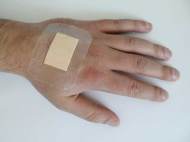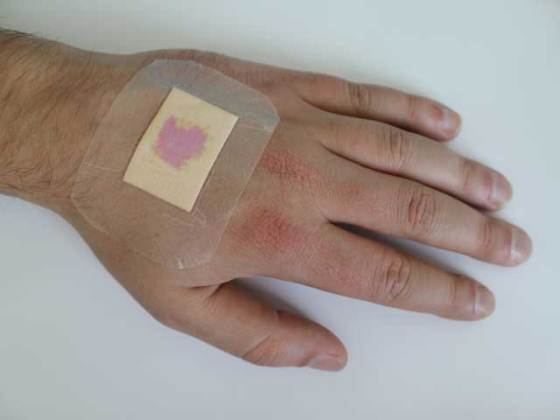Wound infections can be monitored without dressing removal
 Whether a small cut with a fruit knife, a surgical wound or a major injury caused by a fall, the body’s defense and repair system leaps into action and tries to close the wound as quickly as possible. In order to make sure any complications in the healing process are detected at an early stage, wounds have to be regularly checked. A new material will enable wound revitalization process without changing the dressing.
Whether a small cut with a fruit knife, a surgical wound or a major injury caused by a fall, the body’s defense and repair system leaps into action and tries to close the wound as quickly as possible. In order to make sure any complications in the healing process are detected at an early stage, wounds have to be regularly checked. A new material will enable wound revitalization process without changing the dressing.
Scientists at the Fraunhofer Research Institution for Modular Solid State Technologies EMFT (page in German language) in Munich have developed dressing materials and plasters which indicate pathological changes in the skin. If an infection is present, the color of the dressing changes from yellow to purple.
“We have developed an indicator dye which reacts to different pH values, and we have integrated it into a dressing and a plaster. Healthy skin and healed wounds usually show a pH value of below 5. If this value increases, it is shifting from the acid to the alkaline range, which indicates complications in the healing of the wound. If the pH value is between 6.5 und 8.5 an infection is frequently present and the indicator color strip turns purple”, said Dr. Sabine Trupp, scientist at the EMFT.
“The dye has to remain chemically stable when bonded to the fibers of the dressing material or the plaster to ensure that it does not get into the wound. At the same time, the indicator must show a clear change in color and also react sensitively in the right pH range”, said Trupp.
A prototype of the dressing has already been produced and initial tests have proved successful. The researchers are now thinking about how to improve their inovation. There are plans to integrate optical sensor modules into the dressing to measure the pH value and indicate the results on a reader unit. This method would allow the value to be read off precisely, thus providing information about how the wound is healing.
The next step will be the application of the dressing in a hospital environment at the University of Regensburg’s dermatology clinic. Dr. med. Philipp Babilas will be the medical supervisor of the project. “Our studies of the pH value in acute as well as in chronic wounds have shown that it plays a key role in wound healing”, said Babilas.
Dr. Trupp and her team are currently looking for an industrial partner to produce the dressing commercially.










Leave your response!